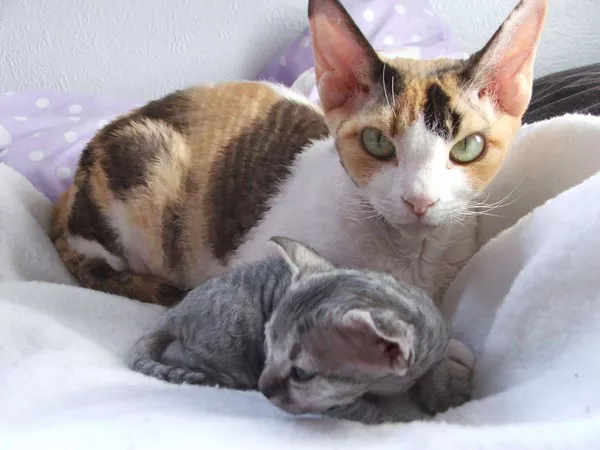Cats, renowned for their independent nature, may not immediately come to mind when thinking about trainable pets. However, contrary to popular belief, cats can indeed be trained at various stages of life. The question arises: What is the best age to train a cat? This article explores the nuances of feline training, examining the advantages and considerations at different life stages to foster a well-behaved and mentally stimulated cat.
Understanding Feline Development:
Kittenhood (Up to 6 Months):
Kittens are like sponges, absorbing information from their surroundings. Early training helps establish positive behaviors and socialization skills.
Focus on basic commands like sit, stay, and litter box training.
Use positive reinforcement techniques, such as treats and praise, to reinforce desired behaviors.
Adolescence (6 Months to 2 Years):
Adolescence can bring a playful but sometimes challenging phase. Cats may test boundaries during this period.
Continue reinforcing basic commands and introduce more complex behaviors.
Engage in interactive play to channel excess energy positively.
Adulthood (2 to 10 Years):
Adult cats are generally more settled but can still learn new tricks.
Consider advanced training like agility exercises or harness training for outdoor adventures.
Maintain mental stimulation through puzzle toys and interactive games.
Senior Years (10+ Years):
Older cats may experience cognitive changes, but training can still provide mental engagement.
Focus on gentle exercises and activities that accommodate any physical limitations.
Monitor for signs of arthritis or other age-related conditions that may affect training.
The Best Age for Basic Commands:
Basic commands, such as sit, stay, and come, can be introduced at any age. However, starting training in kittenhood offers several advantages. Younger cats are more receptive to learning, and positive behaviors established early contribute to a well-mannered adult cat. Patience is key, and short, frequent training sessions work best for kittens.
Socialization and Exposure:
Early socialization is crucial for kittens. Exposure to various environments, people, and other animals helps create a confident and adaptable cat. Between 3 and 9 weeks old is considered the prime window for socialization. However, positive exposures and experiences throughout life contribute to a well-adjusted cat.
Litter Box Training:
Litter box training is a fundamental aspect of feline education. Kittens usually learn from their mother, but if you adopt a kitten, start the training process as soon as you bring them home. Use a low-sided, easily accessible litter box and choose a location free from disturbances.
Challenges of Training Adult Cats:
While adult cats can certainly learn new tricks, they may be more set in their ways. Cats become accustomed to routines, and changes can be met with resistance. Patience, positive reinforcement, and consistency are essential when training adult cats. Focus on behaviors that enhance their well-being, such as grooming acceptance or crate training for vet visits.
Advanced Training for Enrichment:
Beyond basic commands, advanced training provides mental stimulation for cats of all ages. Consider introducing clicker training, which involves associating a click sound with a reward. This method can be effective for teaching more complex tricks or agility exercises. Remember to keep training sessions short and enjoyable to maintain the cat’s interest.
Considerations for Senior Cats:
Senior cats may face physical limitations, such as arthritis or reduced mobility. Tailor training activities to accommodate their needs. Gentle exercises, puzzle toys, and interactive play can provide mental stimulation without causing discomfort. Monitor their health closely, and consult with a veterinarian if you notice any changes in behavior.
Individual Variations in Training Response:
Just like people, cats have individual personalities, and their response to training varies. Some cats may eagerly participate in training sessions, while others may be more reserved. Tailor your approach based on your cat’s comfort level and preferences. Always prioritize positive reinforcement and create a supportive training environment.
Tips for Successful Cat Training:
Use Positive Reinforcement:
Reward desired behaviors with treats, praise, or playtime.
Avoid punishment, as it can create fear and anxiety.
Be Consistent:
Maintain a consistent training schedule and use consistent cues.
Cats thrive on routine and predictability.
Keep Sessions Short:
Cats have shorter attention spans. Keep training sessions brief and enjoyable.
End on a positive note to keep the cat engaged.
Choose the Right Environment:
Minimize distractions during training sessions.
Ensure a quiet and comfortable space to enhance focus.
Patience is Key:
Training takes time, especially with cats.
Be patient and celebrate small successes along the way.
Conclusion:
In the realm of cat training, age is not a limiting factor but rather a variable to consider. From the curious kitten to the wise senior cat, each life stage presents opportunities for learning and enrichment. Training contributes not only to behavioral wellness but also to the deepening bond between a cat and its owner. Embrace the journey of feline education, tailor your approach to your cat’s individuality, and savor the moments of connection and understanding that unfold throughout their lives.



























